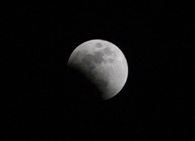Eclipse obscured by weather, next chance in 2010
February 25, 2008
At 9:01 p.m. Feb. 19, the last total lunar eclipse visible from North America until 2010 began in the eastern sky. Brenda Culbertson, Washburn University’s planetarium coordinator, planned to host an event to watch the eclipse but heavy cloud cover made this impossible.
As the eclipse entered the phase known as totality, when the entire moon is within the inner shadow or umbra of the Earth, the Washburn Symphony Orchestra finished their performance of Gustav Holst’s “The Planets Suite.” Several students left White Concert Hall and trekked down to view the eclipse from Stoffer Science Hall, where experts were on hand to explain the eclipse and to provide advice for those wishing to photograph the event. However, a little past the halfway mark to totality cloud cover moved in to obscure the moon. Eventually the eclipse was completely hidden.
“It was a waste of time, and it was cold,” said Pavel Valenzuela Bojorquez, a senior mass media major. “I’m very disappointed about it because I really wanted to see the eclipse.”
Originally the plan for the event was to set up a telescope outside, as the position of the moon made using the observatory impossible. In addition, a video camera was supposed to show the eclipse inside of the planetarium.
“The clouds just wiped us out,” said Culbertson. “We can’t see through clouds.”
Every Thursday through May 8 the Crane Observatory will hold an open house. Additionally, the planetarium has one session per month. Schedules and more information are available next to the planetarium in the southwest corner of Stoffer Science Hall.



